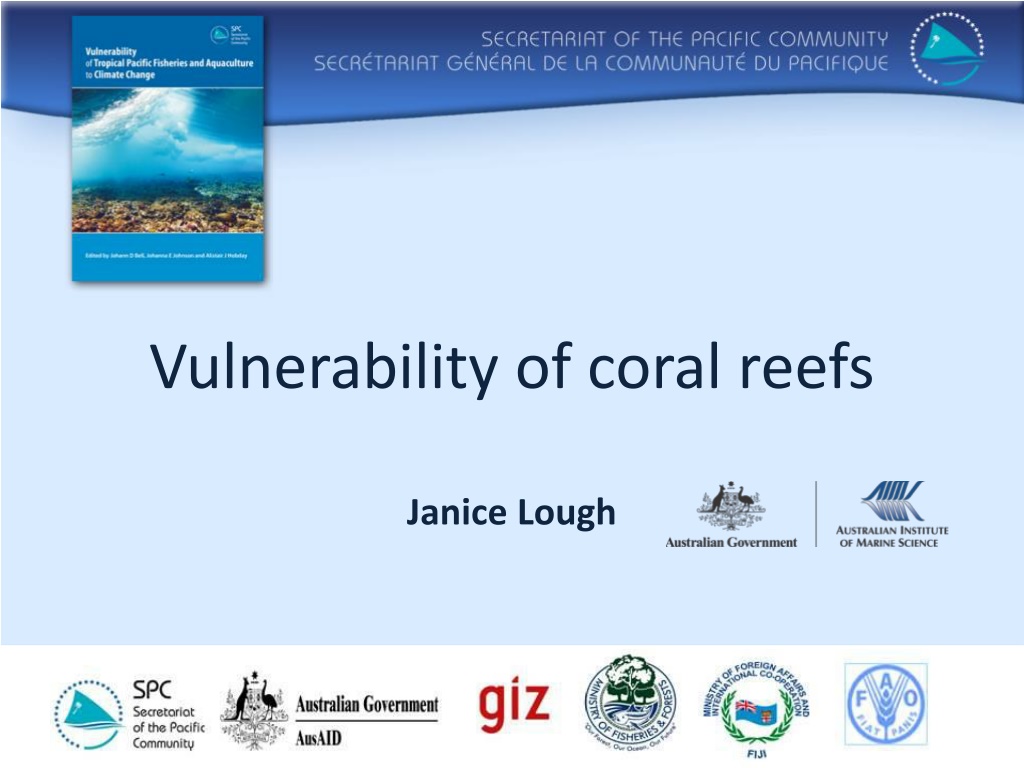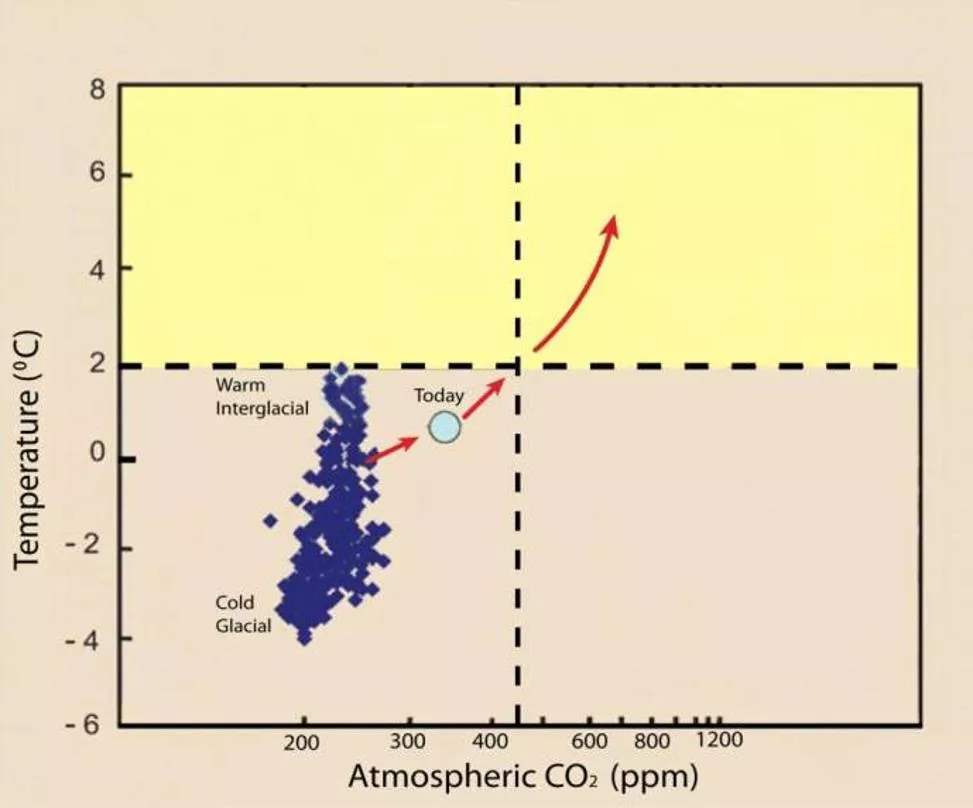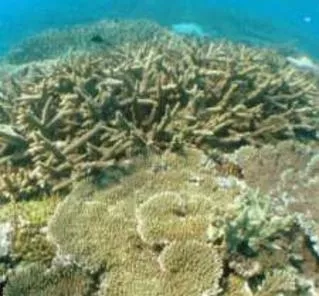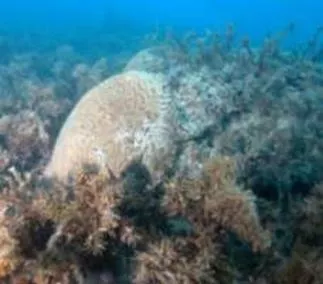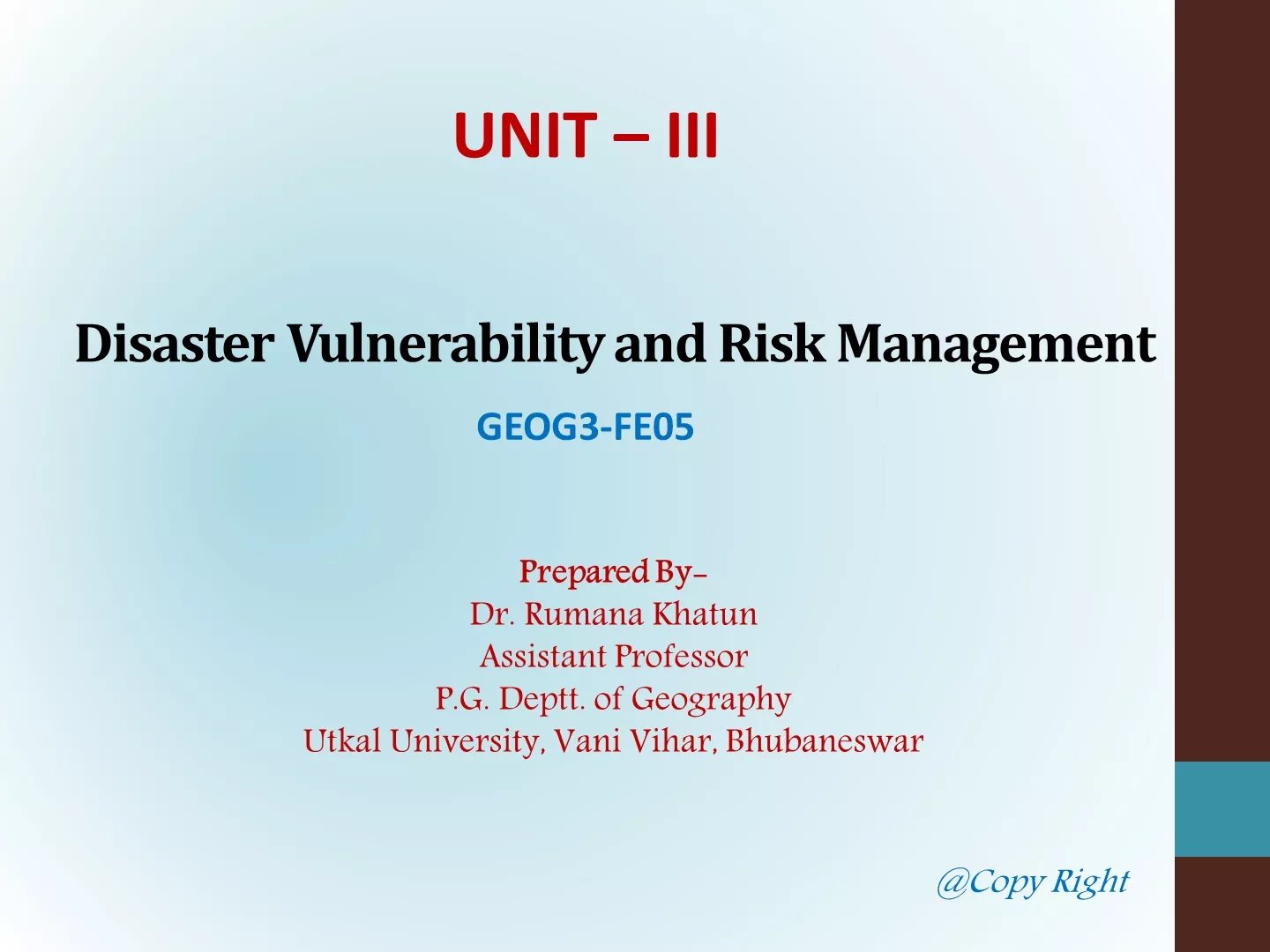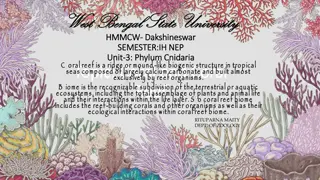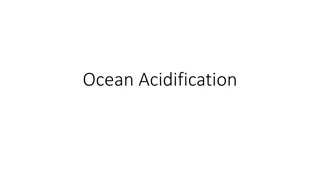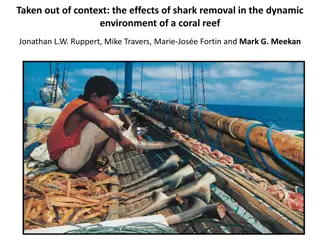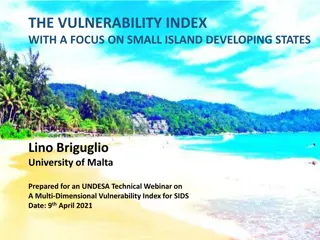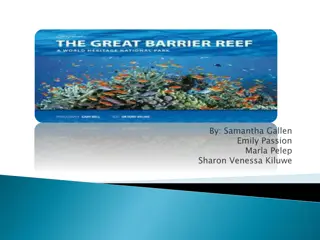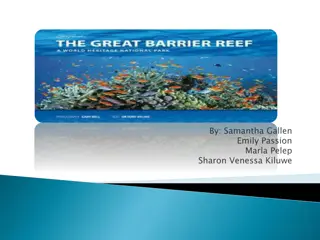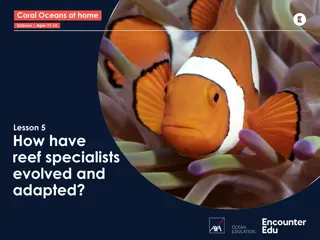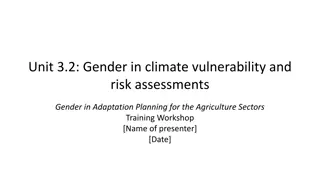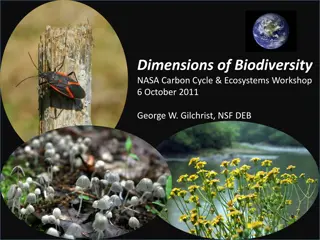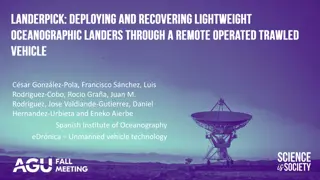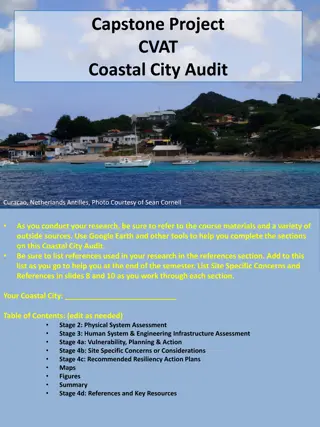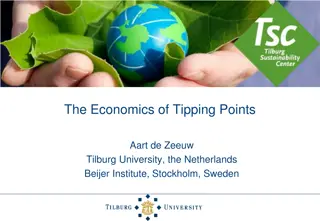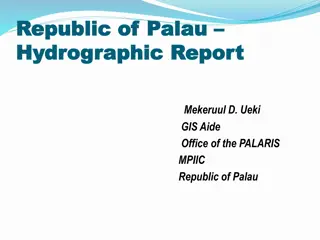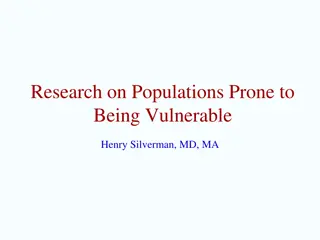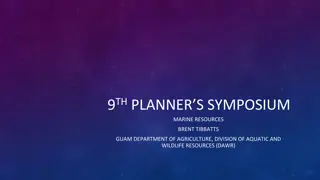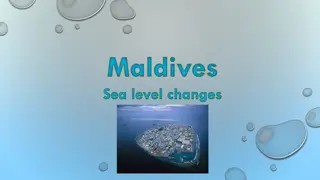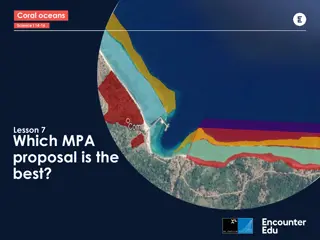The Vulnerability of Coral Reefs
Coral reefs, key coastal ecosystems, face various stressors such as bleaching and human pressures, impacting their ability to recover. With diverse reef types and environmental factors at play, the delicate balance of these underwater marvels is crucial for their survival. The special symbiotic relationship between corals and algae forms the basis of these vibrant ecosystems, but increasing stressors like coral bleaching threaten this delicate harmony. Location, human use, and environmental conditions all play pivotal roles in determining the health and resilience of coral reefs.
Uploaded on Sep 26, 2024 | 0 Views
Download Presentation

Please find below an Image/Link to download the presentation.
The content on the website is provided AS IS for your information and personal use only. It may not be sold, licensed, or shared on other websites without obtaining consent from the author.If you encounter any issues during the download, it is possible that the publisher has removed the file from their server.
You are allowed to download the files provided on this website for personal or commercial use, subject to the condition that they are used lawfully. All files are the property of their respective owners.
The content on the website is provided AS IS for your information and personal use only. It may not be sold, licensed, or shared on other websites without obtaining consent from the author.
E N D
Presentation Transcript
Vulnerability of coral reefs Janice Lough
Moving reefs out of comfort zone Hoegh-Guldberg et al 2007
Outline Coral Reefs key coastal ecosystem many different reef types narrow environmental limits already shown impacts, e.g. bleaching combined effects of disturbances less time to recover simpler reefs healthy reefs will cope better
Many different types of reefs 13/22 PICTS have more reef than land area (e.g. ~Fiji 40%) dominant coastal habitat majority are oceanic great diversity of reef types
With different levels of human use support local fisheries differences in local pressures
Location matters fringing continental reefs affected by river runoff isolated oceanic reefs not well connected e.g. larval supplies tropical cyclones> 10o from equator El Ni o/La Ni a impacts
Important environmental factors warm water temperatures shallow well-lit waters low sediment and nutrients right ocean chemistry >3.3 warmest parts of oceans narrow temperature range
Corals must build skeletons fast enough to withstand natural forces of erosion tropical cyclones waves sunshine predators coral eaters
A special relationship symbiosis at heart of tropical coral reefs photosynthetic algae live within coral animal corals get enough energy for rapid calcification form structurally complex reefs home to thousands of other plants and animals
Relationship breaks down due to stress stressed corals lose algae (and their pigments) coral bleaching seen more frequently due to warmer temperatures corals living only ~1-2oC below upper thermal limit too much fresh water also causes bleaching Healthy - unbleached Recently dead Stressed - bleached
Ocean acidification 30% extra CO2entered oceans otherwise greater warming! BUT changes ocean chemistry harder to form skeletons & shells more erosion
Ocean acidification: natural laboratory high CO2volcanic seeps, PNG winners = massive corals losers = branching, tabulate corals reduced coral diversity much simpler reef with lower pH Lower pH = 2100 Mid pH = 2050 Normal pH = now Fabricius et al 2011
Warmer temperatures very high vulnerability already seen bleaching, diseases
More acidic ocean high vulnerability weaken reef framework
Stronger storms and heavier rainfall moderate vulnerability more disturbances = less time to recover
Higher sea level some corals may keep up loss of deeper corals
Opportunities for management interventions Anthony & Maynard 2011
Reef status: Fiji value of monitoring appears stable condition tropical cyclones, bleaching, COTs recovery after disturbance localised pollution/overuse 34% of reefs classed at low threat Morris & Mackay (2008) Status of coral reefs of the world 2008
What it means for coral reefs already shown vulnerability bleaching and diseases physical destruction weaker skeletons lower salinity connectivity between reefs direct & indirect effects on other reef organisms
Summary key issues rates of change combined stressors less time to recover between disturbances can adaptation occur in decades rather than 1000 s years? healthy reefs better able to cope consequences for reef-dependent fisheries Coral reefs will not disappear entirely BUT likely to be MUCH SIMPLER ECOSYSTEMS
Thank you j.lough@aims.gov.au
